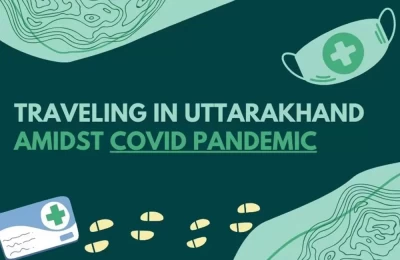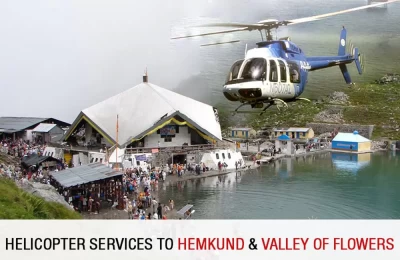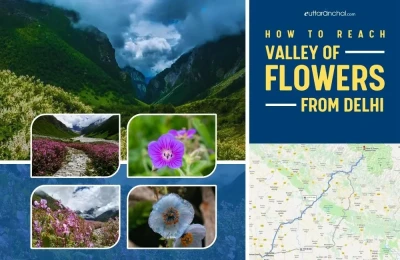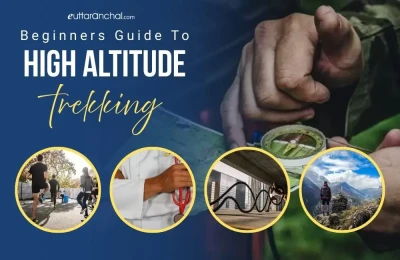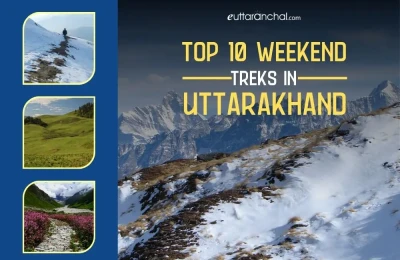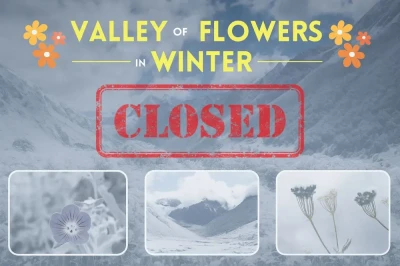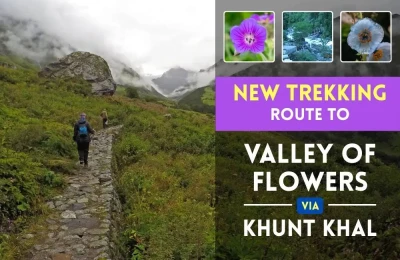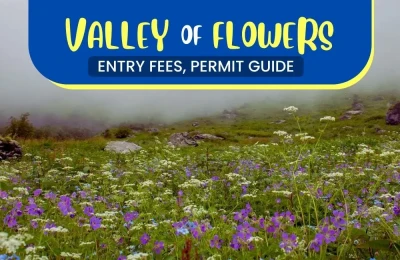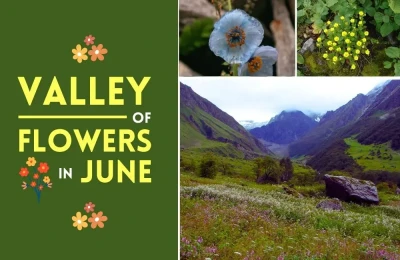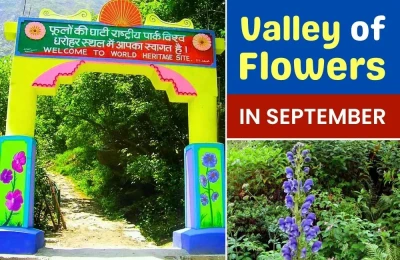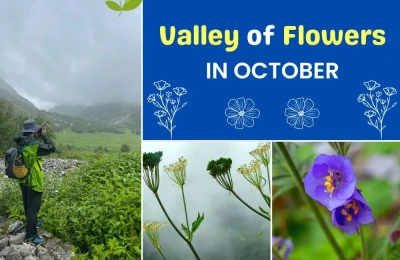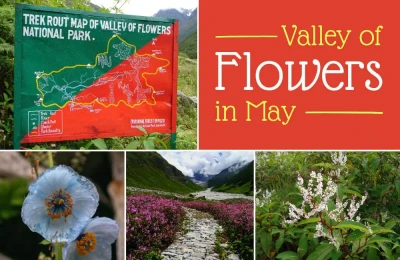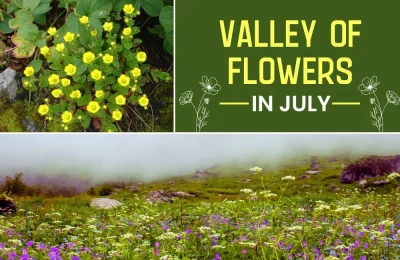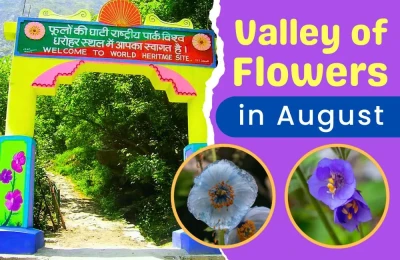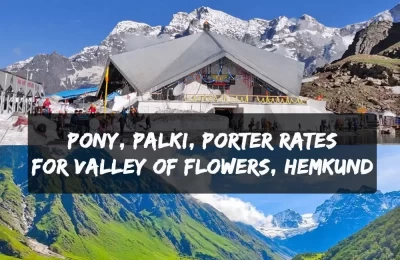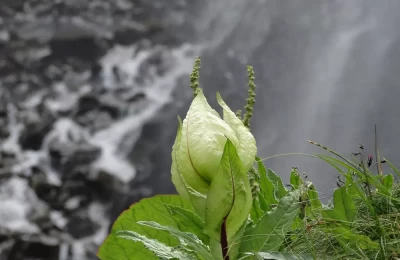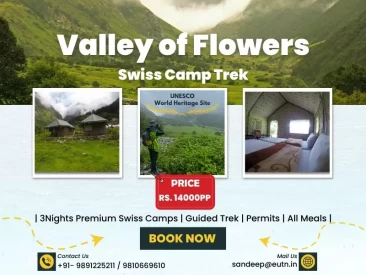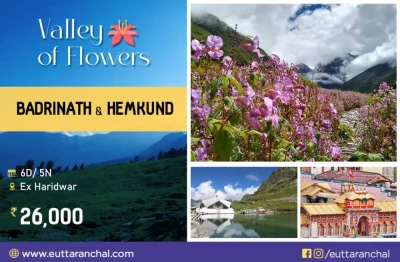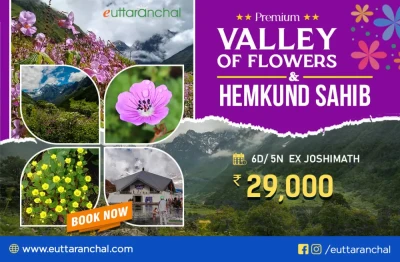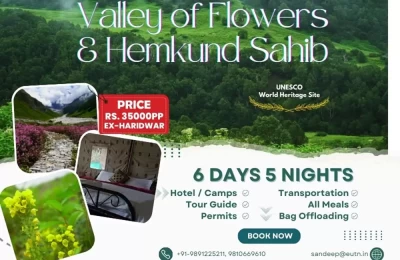Valley of Flowers Trekking Things to Carry, Travel Tips
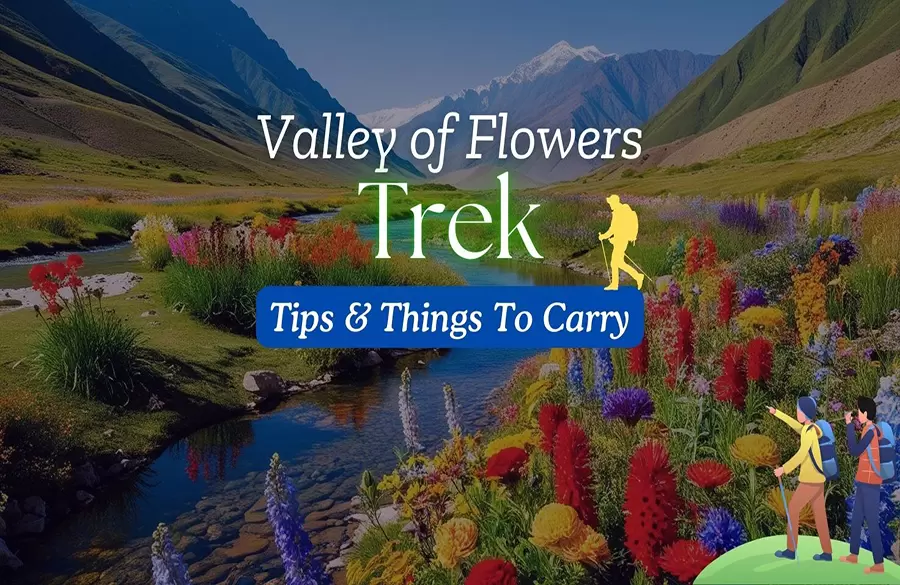
The Valley of Flowers is nestled at an altitude of over 3,600 meters, this high-altitude Himalayan valley attracts nature lovers, trekkers, and photographers from across the globe for its vibrant blooms and breathtaking landscapes.
To ensure a safe and enjoyable experience for Valley of Flowers, preparation is the key. From understanding the best time to visit and acclimatization tips to packing the right gear for the trek, this guide covers all the essential advice you need. Whether you're a seasoned trekker or a first-time visitor, these tips and a comprehensive packing checklist will help you make the most of your journey to this floral wonderland.
Here is the following list of the important tips and things to carry for trekking.
Valley of Flowers Travel and Trekking Tips
The Valley of Flowers is a UNESCO World Heritage Site known for its breathtaking beauty and rich biodiversity. Visiting this high-altitude paradise requires planning and preparation.
Here are some essential travel tips to make your trip smooth and enjoyable:
- Best Time to Visit: July to September is the blooming season when the valley is carpeted with vibrant flowers like blue poppies, daisies, and Brahma Kamal. check Valley of Flowers Weather Updates. Be prepared for sudden rain; monsoons can make trails slippery. Check Ghangharia weather forecasts before starting your trek.
- Reaching Valley of Flowers: Check How to Reach Govindghat. Followed by Trek Routes to Govindghat to Ghangaria (13 km trek or mule ride) and Ghangaria to Valley of Flowers (4 km trek one way).
- Entry Permits: Obtain entry permits at Ghangaria to visit the Valley of Flowers. Carry a government-issued ID and keep a few photocopies for permits.
- Physical Fitness: Moderate fitness is required as the trek involves steep ascents. Prepare with cardio and light trekking exercises 4-6 weeks before your trip.
- Accommodation: Book in advance during peak season as accommodation options are limited. Check Budget hotels and guesthouses in Govindghat and Hotels Camps in Ghangharia.
- Food and Water: Simple vegetarian meals are available in Govindghat and Ghangaria. Carry snacks like dry fruits, energy bars, and chocolates for the trek. Use filtered or boiled water; avoid drinking directly from streams.
- Trekking Tips: Start early to make the most of the daylight. Wear comfortable trekking gear and pace yourself. Carry enough water and stay hydrated. Stick to designated trails to avoid damaging the fragile ecosystem.
- Eco-Friendly Travel: Avoid plastic bottles and dispose of waste responsibly. Respect the flora and fauna; do not pluck flowers or disturb wildlife.
- Health and Safety: Acclimatize at Ghangaria before heading to the Valley of Flowers. Carry altitude sickness medication if needed. Inform someone about your itinerary for safety.
Visiting the Valley of Flowers is a once-in-a-lifetime experience, combining natural beauty, adventure, and tranquility. With proper planning and respect for nature, your journey will be safe, enjoyable, and unforgettable.
Things To Carry for Valley of Flowers
- Warm shirt/ light microfleece pullover/ full sleeve T-shirt, Thermal innerwear
- Water-resistant trekking pants
- Windproof/ water-resistant jacket
- Thick Fleece/ Full-sleeve woolen sweater
- Woolen cap, Inner fleece gloves, outer waterproof gloves, Scarf/ muffler (optional)
- Thick woolen socks and regular socks (keep extra pairs)
- Comfortable waterproof Trekking/ Hiking shoes with a thick sole
- Raincoat/ Poncho, Small lightweight towel
- Insulated water bottle and hydration pack (optional)
- Cap/ floppy, Sunglasses, Sunscreen Lotion, Lip Balm
- Sturdy walking stick/ Trekking pole
- Torch/ Flashlight (with extra batteries)
- Personal medication, Personal toiletries
Valley of Flowers Do's and Don'ts
Do's
1. Obtain a necessary permit before starting your trek.
2. Study the weather forecast of the area before heading for your trekking trip. Avoid trekking during bad weather or adverse climatic situations.
3. It is compulsory to hire a local guide and porter for your safety and convenience. Local guides are knowledgeable about the terrain and can rescue you in case of an emergency.
4. Pack all hiking essentials (best waterproof jacket, best waterproof pants, water, food, illumination (headlamp or flashlight), warm clothing, first aid kit, navigation aids) so that you can be entirely self-sufficient.
5. Always stay on designated trails to avoid damaging fragile ecosystems. Going off-trail can also put you at risk of getting lost or encountering dangerous terrain.
6. Gradually acclimatize to higher altitudes to prevent altitude sickness. Maintain a steady pace and listen to your body; descend if experiencing severe symptoms.
7. The motto is “don’t take anything but pictures and leave nothing but footprints.” Hence, carry a bag for garbage and always pack out all trash and waste, including food scraps and wrappers.
8. Use toilets wherever available.
9. Be aware of altitude sickness symptoms, such as dizziness, shortness of breath, nausea, and headaches. If you experience any of these, descend to a lower elevation.
10. If you encounter other hikers on the trail, yield to them by stepping aside or moving to the side of the trail to let them pass. Uphill hikers generally have the right of way.
11. Respect nature and wildlife.
12. You will have to be in constant contact with the Forest Department during the permission period.
13. Registered tour operators/Guides/Porters shall abide by, and help trekkers to understand and abide by, the provisions of The Wildlife Protection Act 1972 and The Indian Forest Act 1927.
Don'ts
1. Avoid making excess noise (shouting only in the case of an emergency).
2. Do not bury or burn trash, as it can harm the environment and wildlife.
3. Avoid using products with strong scents because they attract animals with strong senses of smell. Most importantly, remain vigilant and be aware of your surroundings.
4. Do not carry or use fuelwood/camping stoves during the entire trek.
5. Flying of drones is not allowed in the Park Area without the permission of Chief Wildlife Warden, Uttarakhand Forest Department.
6. Do not take away flora and fauna (in the forms of cuttings, seeds, or roots) and any geological specimen. It is illegal. The environment is really delicate, and the bio-diversity of the region has to be protected at all costs.
7. Do not leave cigarette butts or make open fires in the forests.
8. Do not consume aerated drinks, alcohol, drugs, or any other intoxicant and throw bottles in the wild.
9. Do not carry firearms/ammunition and chemicals harmful to wildlife.
10. Do not disturb plants, animals, or natural habitats, and keep a safe distance from wildlife. Avoid feeding wildlife and do not approach them for photos.
11. No shooting, hunting, and teasing of wild animals will be carried out.
12. Do not carry or introduce any alien seed or propagation material or any plant species.
13. Do not carry or introduce any wild/pet animal.
14. Don’t deface, put signboards, write, or paint on the tree trunk/tree/rock/infrastructure/boundary pillars, etc.
Help us to Improve this Travel Tips for Valley of Flower List!
If you know any other Things To Carry for Valley of Flower, which is not listed above then, Kindly share the details at helpdesk@eutn.in
If you find any inappropriate Important things to carry for travelling Valley of Flowers listing do mail us in the same email id, so that we can update/remove it to provide the best information to our visitors. Thank You!
